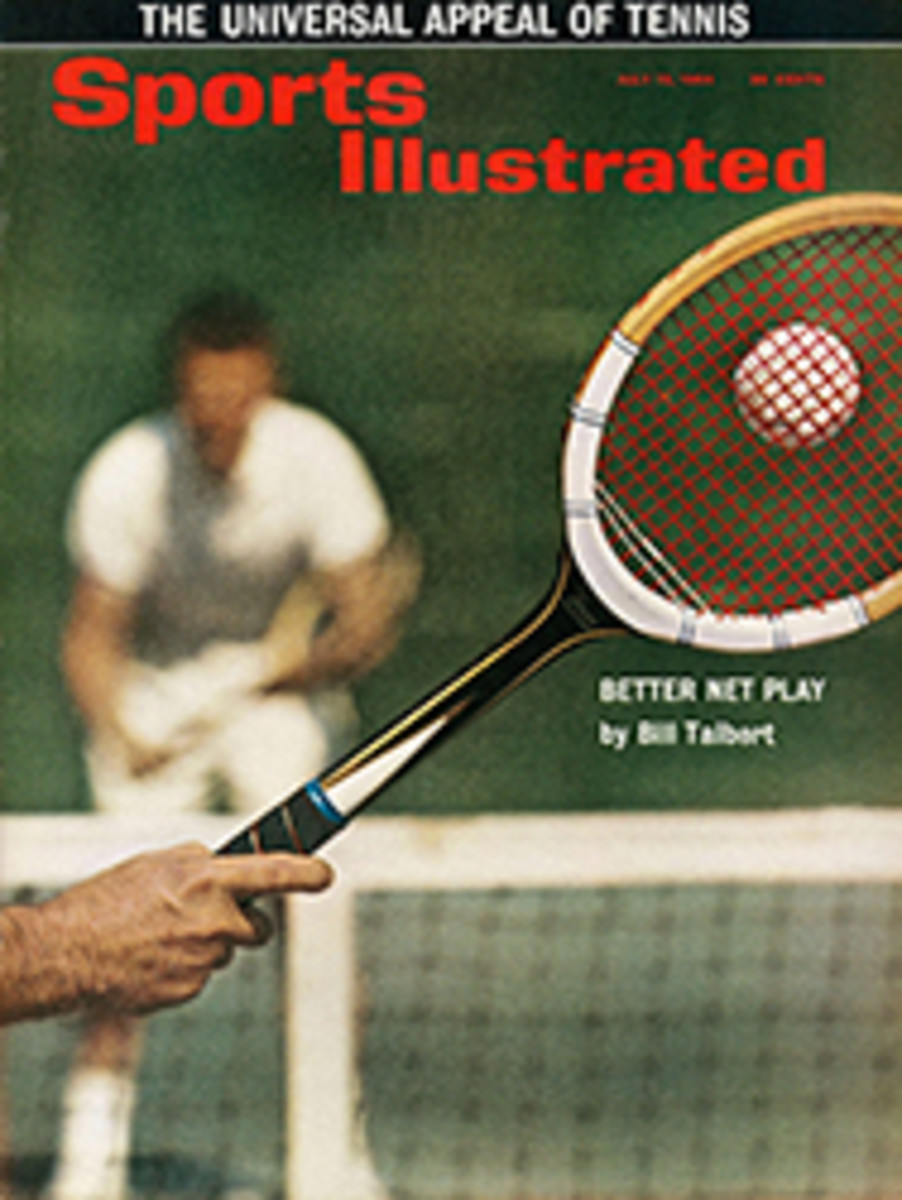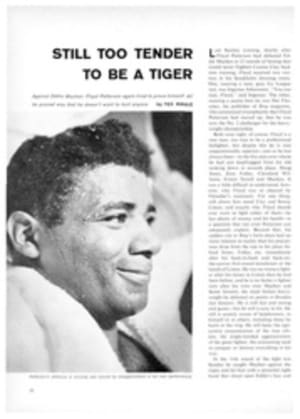
THE OUTCASTS ARE COUNTED IN
Shortly before Roy Emerson beat Fred Stolle to win the singles title at Wimbledon last week, both players received telegrams from the Lawn Tennis Association of Australia congratulating them on reaching the finals. It was a curiously warm gesture on the part of the LTAA, which, in a fit of pique last February, banned both Emerson and Stolle from the association, thus making them ineligible to represent their country in Davis Cup play. Emerson, Stolle and two other players had defied an association order to remain in Australia until April and had, instead, gone on an overseas tour. "When they realize we are adamant," roared LTAA President Norman Strange at the time, "they will behave differently in the future. Some of them flout our authority all the time."
That was in February. Now, five months later, Emerson and Stolle held telegrams of best wishes from the very man who had banned them. "Just normal procedure," said Strange from Australia. "We aren't trying to soft-soap them." Perhaps not, but chances are very good that when Australia plays its Davis Cup match against Canada next week Emerson and Stolle will be present—and in action. For many weeks Cup Captain Harry Hopman has been working hard at a truce. Not long ago, in a long telephone conversation, he succeeded in persuading Emerson to write a letter to Strange expressing his desire to play on the team and promising, as president of the Australian players' association, that next year he and his fellow outcasts will not play tennis outside the country until the end of February.
And so Strange is faced with an awkward choice. If he receives Emerson and Stolle back into the family, he yields control of the game in Australia to the players. If he stands firm, Australia has little chance of winning back the Davis Cup and probably will not even reach the Challenge Round against the U.S. Since reaching it is worth $50,000 to the challenger, there is heavy pressure on Strange to welcome home Roy Emerson, the new Wimbledon champion.
This year's Wimbledon tournament proved beyond a doubt that Emerson is the finest amateur tennis player in the world, although he does not really have a natural gift for tennis. When he serves, for instance, he winds up like a wind-mill, stopping momentarily before going into the actual motion of hitting the ball. But he has speed and strength and all the instincts of a great athlete. At 14, he high-jumped 5 feet 10 inches and broad-jumped 22 feet.
Now 28, Emerson is married and the father of a one-year-old son. He is employed as a public relations man for a cigarette company, a situation that is permissible under Australia's broad code of amateur standards.
Fred Stolle also plugs for a cigarette company. (Stolle smokes five cigarettes a day, Emerson six.) Stolle is much the better PR man. Ask him who employs him and the answer comes quick as a flash in the form of an open flip-top box. "Have one," he says. When he beat Chuck McKinley in the semifinals, one of Stolle's first off-court comments was that he was attending a cocktail party that evening given by his managing director and that such victories as this made the boss smile.
It was a miserable tournament for the U.S. players. Dennis Ralston, with no practice on grass since December's Davis Cup matches, flew to London the night before the first round and was promptly beaten. So was gangling Frank Froehling, who had reached the finals at Forest Hills last year, beating Roy Emerson in the process.
One by one, the other Americans dropped—41-year-old Tom Brown and 17-year-old Cliff Richey, Ron Holmberg, Davis Cuppers Arthur Ashe, Marty Riessen and Gene Scott—until only Chuck McKinley, last year's Wimbledon champion, remained. At no time during the tournament did McKinley look sharp, yet he kept hustling and winning. Then he met Stolle in the semifinals. McKinley won the first set and broke Stolle's serve for a 2-1 lead in the second. But in the next game McKinley double-faulted twice to lose the game and his momentum. Stolle won the second set; even so, McKinley fought back to come within one point of winning the third. Then Stolle sent McKinley's serve whistling past him, and McKinley never threatened again.
Nor did the U.S. women fare any better at Wimbledon. Nancy Richey attracted the crowds with her Helen Wills-like sun visor and her hard ground strokes, but she was beaten in the quarter-finals by Australia's Lesley Turner. Billie Jean Moffitt, a finalist last year, was beaten again by Margaret Smith of Australia, this time in the semifinals.
In the finals it was Miss Smith, the defending champion, against Maria Bueno of Brazil, Wimbledon champion in 1959 and 1960. Margaret Smith is a big, rangy girl who hits the ball as hard as most men. Miss Bueno, at 24 three years older than Margaret, can also hit the ball hard, but there is a grace to her movements that Miss Smith, and indeed everyone else, lacks.
Because she is older and because she still shows signs of weakness from the case of hepatitis she contracted in 1961, Maria Bueno was the underdog, even though she had beaten Miss Smith at Forest Hills last year. But in the first set, with the score 4-4, Margaret got the jitters. "I clamped up," she later said. Serving at 15-40, she sent her second serve a good six feet wide of the center line Jumping on this opportunity, Miss Bueno held serve to win the first set.
In the second set Miss Smith moved out in front 4-0 and it seemed she was on her way, but Maria proved she was far from finished by evening it up at 4-4. Margaret eventually won the set 9-7, but Miss Bueno wrapped up the championship by winning the third set easily, 6-3. In gaining her third Wimbledon championship, Maria earned the unqualified right to be mentioned in the same breath with such players as Suzanne Lenglen and Helen Wills. Her movements on the court were truly lovely, a welcome reminder of the beauty of tennis (see next page).
And so at the traditional post-tournament ball Maria Bueno danced with Roy Emerson. When it was over, Maria packed to leave for her next tournament. Emerson went to Sweden, where he was expecting another telegram.
TWO PHOTOS
Shown here lunging for low backhands, Australia's naughty boys, Emerson (left) and Stolle, made it into the finals, where Emerson won.
PHOTO
With the grace of a ballerina, Maria Bueno leaves the ground to return a high backhand.

